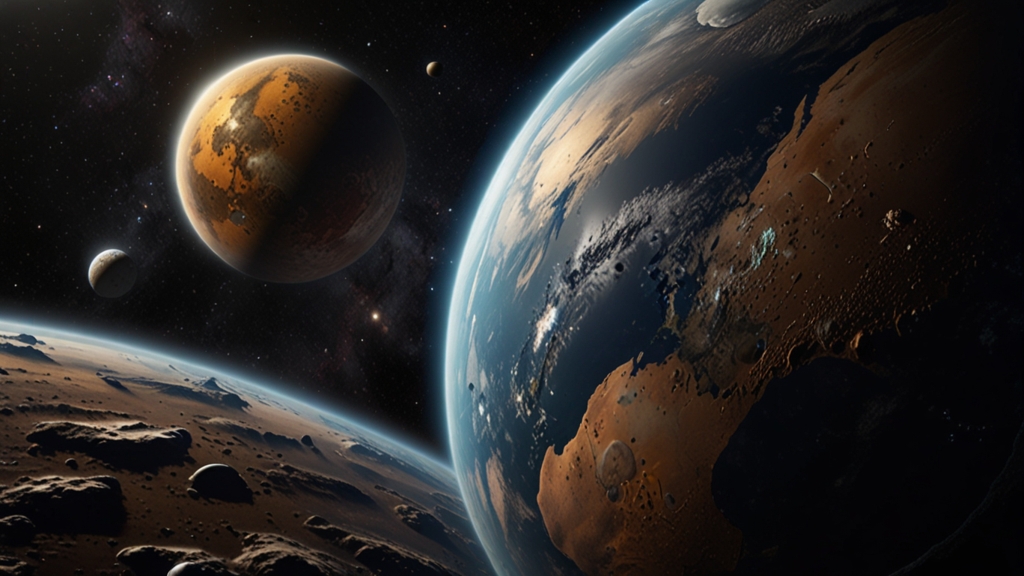Astrobiology: The Incredible Science Behind Life Beyond Earth
Astrobiology, a relatively young and incredibly fascinating field, delves into one of humanity's most profound questions: Are we alone in the universe? This interdisciplinary branch of science explores the origins, evolution, distribution, and future of life in the universe. By combining elements of biology, chemistry, astronomy, and geology, astrobiologists aim to uncover the mysteries surrounding extraterrestrial life. Let's delve into the exciting world of astrobiology and understand the incredible science behind the search for life beyond Earth.
The Origins of Astrobiology
The concept of life beyond Earth has captivated human imagination for centuries. Ancient philosophers and scientists often speculated about other worlds and their potential inhabitants. However, it wasn't until the 20th century that astrobiology emerged as a formal scientific discipline. The development of space exploration technologies and the discovery of extremophiles on Earth — organisms that thrive in extreme environments — boosted the credibility of life existing in harsher extraterrestrial conditions.
"The universe is a pretty big place. If it's just us, seems like an awful waste of space." - Carl Sagan
Searching for Life: The Role of Telescopes and Probes
Telescopes, both ground-based and spaceborne, play a critical role in the search for extraterrestrial life. Instruments like the Hubble Space Telescope, and more recently, the James Webb Space Telescope, allow scientists to observe distant exoplanets and their atmospheres. By analyzing the light spectrum that exoplanets emit or block, researchers can infer the presence of essential life-sustaining elements such as water, oxygen, and methane.
Additionally, space probes like NASA's Mars rovers and ESA's Rosetta mission have provided invaluable data by exploring local environments within our solar system. These probes help astrobiologists understand the conditions on planets and moons, assisting in the ongoing quest to find microbial life on worlds like Mars, Europa, and Enceladus.
Extremophiles: Earth’s Lessons for Extraterrestrial Life
One of the most compelling arguments for life beyond Earth comes from studying extremophiles — organisms that thrive in extreme conditions on our planet. These resilient life forms are found in boiling hydrothermal vents, acidic lakes, radioactive waste, and even the icy realms of Antarctica. Their existence expands the types of environments considered hospitable for life, suggesting that extraterrestrial life may exist in places previously deemed uninhabitable.
"Life finds a way." - Ian Malcolm, Jurassic Park
Biosignatures and Technosignatures: Clues to Life
Detecting life beyond Earth often hinges on identifying biosignatures and technosignatures. Biosignatures are indicators of life, such as specific molecules, isotopic patterns, or even physical structures that directly result from biological activity. For example, the discovery of phosphine in Venus's atmosphere recently sparked debates about potential microbial life in its clouds.
Technosignatures, on the other hand, imply the detection of intelligent life through technological markers. These could include radio signals with patterns indicative of communication or large-scale megastructures like Dyson spheres, which might be observable through their impact on a star's light.
Future Prospects and Missions
The future of astrobiology looks promising with several missions and projects on the horizon. NASA's Perseverance rover is currently exploring Mars, searching for ancient microbial life and collecting samples to be returned to Earth. The upcoming Europa Clipper mission aims to investigate the icy moon of Jupiter, which harbors a subsurface ocean that could potentially support life.
Additionally, the James Webb Space Telescope, launching in late 2021, is set to revolutionize our understanding of exoplanets by offering unprecedented observational capabilities. Its findings could significantly advance our knowledge of potentially habitable worlds and their atmospheres.
Conclusion: The Boundless Frontier
Astrobiology is not merely a quest to find extraterrestrial life; it is a journey towards understanding the cosmic context of our own existence. By exploring the potential for life beyond Earth, we gain insights into the resilience and adaptability of life as we know it. As we continue to probe the skies and scrutinize distant worlds, the possibility that we might one day find a kindred form of life grows ever more tangible. In the vast expanse of the universe, the search for life beyond Earth stands as a testament to human curiosity and our enduring spirit of exploration.








